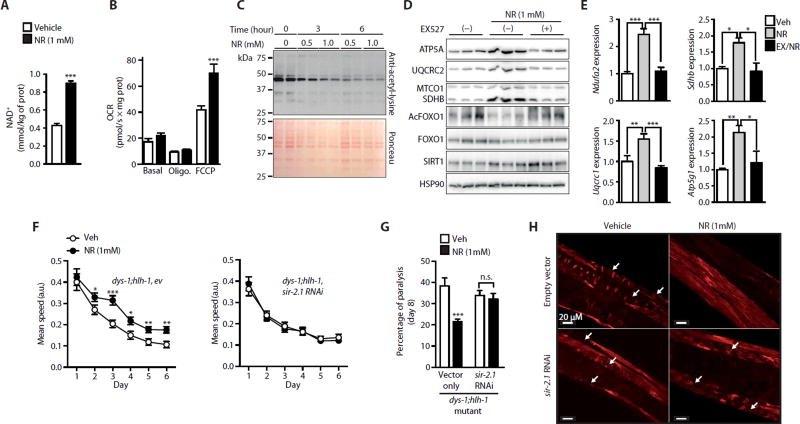Fig. 3. NR enhances mitochondrial function in C2C12 myotubes and increases SIRT1-dependent muscle integrity and function in dys-1;hlh-1 double-mutant C. elegans.
C2C12 myotubes were treated with 0.5 to 1 mM NR. Twelve hours of NR increases (A) intracellular NAD+ levels (n = 6) and (B) increased oxygen consumption rate (OCR) in myotubes exposed to the uncoupler FCCP (n = 6). Veh, vehicle. (C) Total protein acetyl-lysine levels in myotubes were reduced after 6 hours of exposure to 0.5 and 1 mM NR. (D) SIRT1 inhibition with EX527 (10 µM) in myotubes attenuated increases in mitochondrial proteins [ATP5A (Ctrl, 1.00 ± 0.08; NR, 2.28 ± 0.14; NR + EX527, 0.80 ± 0.24; Ctrl versus NR, P = 0.001; NR versus NR + EX527, P = 0.006), UQCRC2 (Ctrl, 1.00 ± 0.15; NR, 3.54 ± 0.44; NR + EX527, 1.04 ± 0.17; Ctrl versus NR, P = 0.006; NR versus NR + EX527, P = 0.006), MTCO1 (Ctrl, 1.00 ± 0.18; NR, 2.25 ± 0.61; NR + EX527, 1.04 ± 0.07), and SDHB (Ctrl, 1.00 ± 0.19; NR, 3.54 ± 0.15; NR + EX527, 1.84 ± 0.11; Ctrl versus NR, P = 0.001; NR versus NR + EX527, P = 0.001)], reductions in FOXO1 acetylation (Ctrl, 1.00 ± 0.14; NR, 0.46 ± 0.26; NR + EX527, 1.50 ± 0.25; NR versus NR + EX527, P = 0.044), and (E) inductions of mitochondrial-related transcripts after 12 and 6 hours of NR treatment, respectively. EX, EX527. (F) Improvements in dys-1;hlh-1 mutant worm fitness on days 1 to 6 of adulthood after NR and its sir-2.1 dependence shown in animals fed RNA interference (RNAi) for sir-2.1 (R11A8.4), as measured by examining worm motility using the worm tracker (n = 3 or 60 worms per experiment) (10). a.u., arbitrary units. Reduced worm paralysis (n = 3 or 60 worms per experiment) (G) and muscle degeneration, measured by rhodamine-coupled phalloidin staining (n = 6 or 60 worms per experiment) (H) in dys-1;hlh-1 mutant worms after NR, were not observed in dys-1;hlh-1 worms fed RNAi for sir-2.1. Arrows indicate degenerated muscle fibers.

